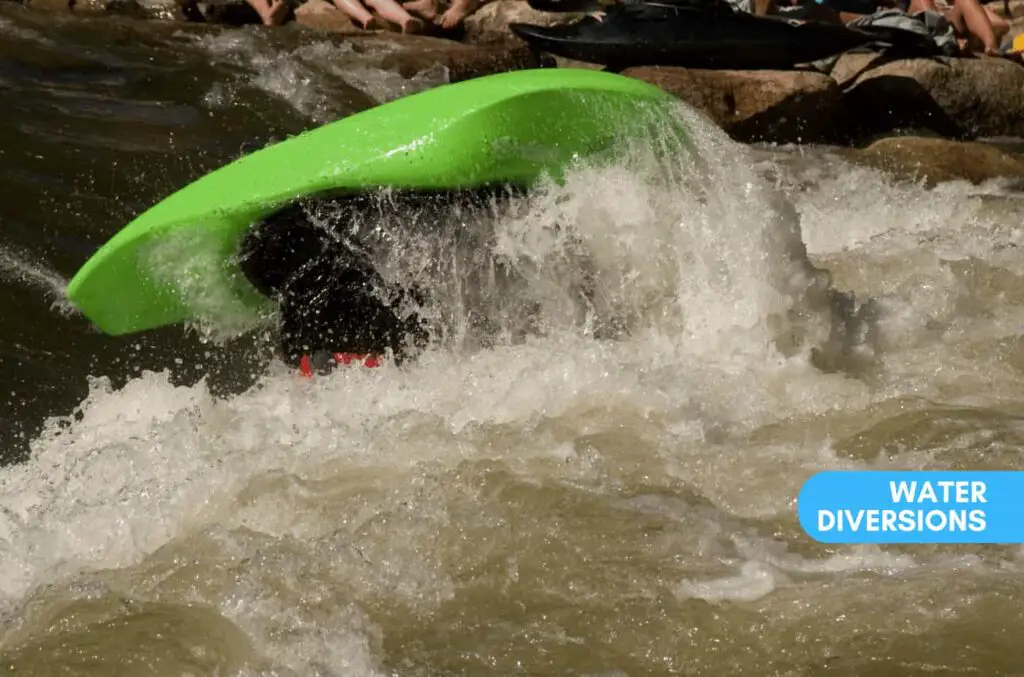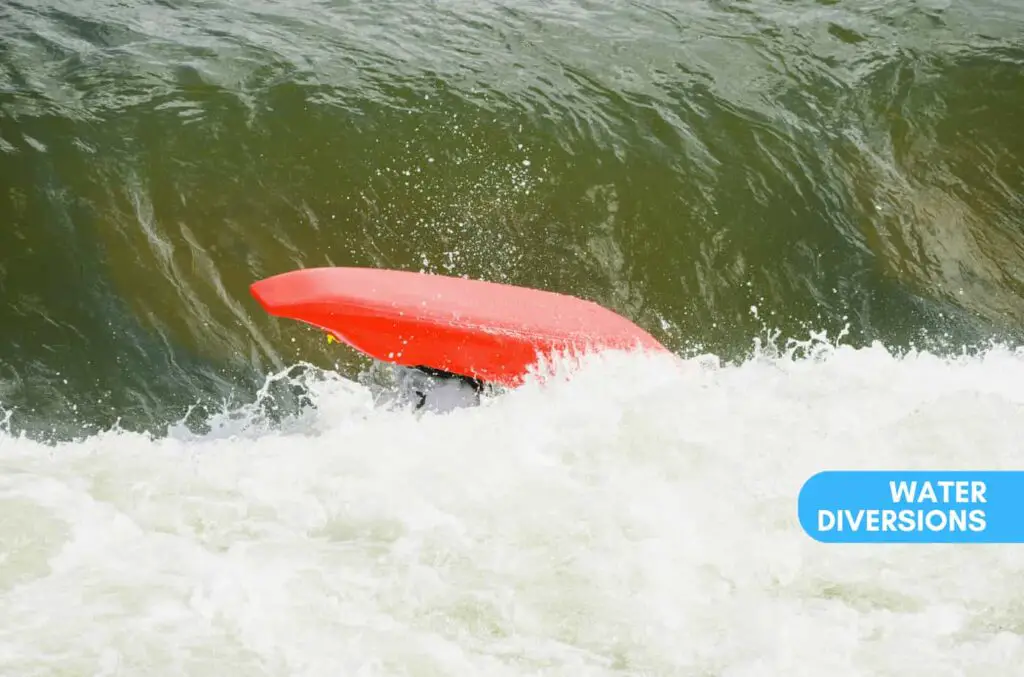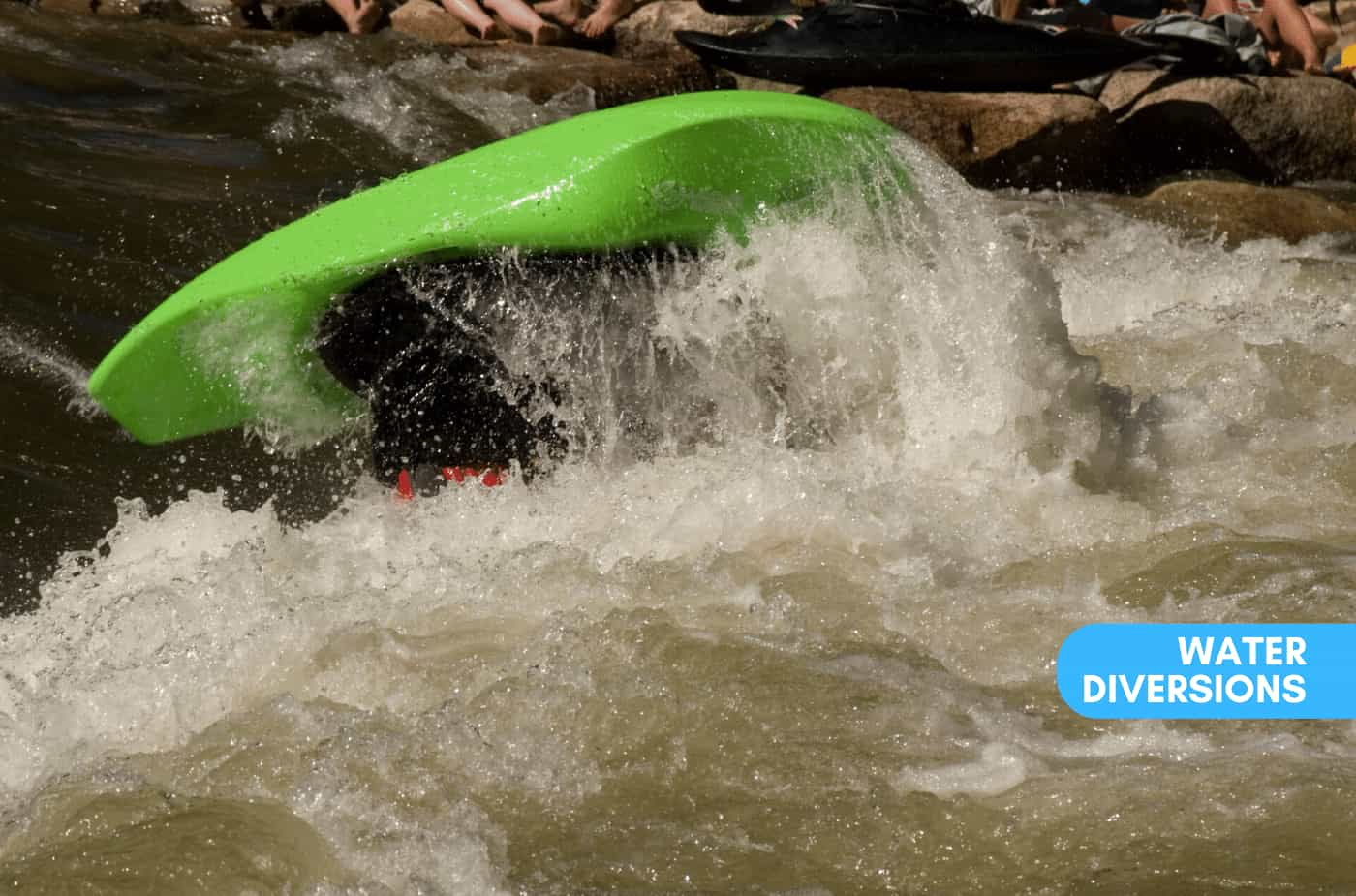Kayaking can be an exciting and adventurous activity, but it also comes with its own set of risks. One of the most common fears that kayakers have is the possibility of flipping over in the water.
While this may seem like a nightmare scenario, knowing what to expect if your kayak capsizes can help you stay calm and safe in the event that it happens.
When a kayak flips, the first thing you’ll feel is a sudden shock as you’re plunged into the water. Depending on how deep the water is and how strong the currents are, you may find yourself struggling to keep your head above water.
At this point, it’s important to remain calm and remember any safety instructions or techniques you learned before setting out on your kayaking trip. In this article, we’ll take a closer look at what happens when a kayak flips and provide some tips for staying safe in case of an emergency.

The Initial Shock Of Capsizing
The sudden feeling of the kayak tipping over can be a shock to anyone. Coping strategies may vary from person to person, but it’s important to acknowledge the psychological effects that come with capsizing. Fear, panic and anxiety are common emotions that may arise in this situation.
It’s natural for individuals to feel disoriented or confused after a capsize. Some may struggle to grasp what has just happened, while others may immediately try to assess their safety. These reactions are normal and depend on an individual’s personality, prior experiences and preparedness.
As the first few seconds pass by, it’s important to remain calm and focused. By controlling breathing and adopting positive self-talk, individuals can begin to mitigate any negative psychological effects that may hinder their ability to cope with the situation at hand.
Struggling To Stay Afloat
Recognizing a Flip:
It’s important to be aware of the signs that indicate a kayak is about to flip, such as the bow of the kayak rising and the stern beginning to dip.
Preparing for a Flip:
Knowing the proper technique for a flip is key; if you’re able to brace yourself and stay calm, you’ll be better prepared to right the kayak and paddle on.
Recognizing A Flip
As you paddle down the river, the sun shines on your face, and a refreshing breeze cools you off. Suddenly, you hit a large rock hidden under the water’s surface, causing your kayak to tip over. This is a common cause of kayaking accidents that can happen to anyone.
Recognizing a flip is essential to prevent serious injuries or drowning. One of the most effective ways to recognize a flip is by paying attention to your body’s sensations. If you feel your kayak tilting, try to lean in the opposite direction to balance it out.
Furthermore, check for other signs such as waves splashing inside the kayak or feeling unstable on the water’s surface. Remember that prevention techniques such as wearing a life jacket and learning proper paddling techniques can minimize the risk of flipping.
In conclusion, recognizing a flip can save your life when kayaking. By staying alert and practicing preventive measures like wearing safety gear and learning proper techniques, you are more likely to stay safe while exploring rivers or lakes on your kayak. Always remember that safety should be a top priority when engaging in any water activity!

Preparing For A Flip
If you find yourself struggling to stay afloat after a flip, it’s essential to prepare beforehand. Equipping yourself with the right gear can be the difference between life and death in an emergency situation.
Equipment essentials such as a helmet, personal flotation device (PFD), and a paddle leash are crucial for safe kayaking. A helmet protects your head from rocks or other obstacles during a flip, while a PFD keeps you buoyant in the water. A paddle leash ensures that your paddle stays within reach if you lose it during a flip.
Practice techniques can also make all the difference when preparing for a flip. Learning how to roll your kayak back upright is an essential skill that every kayaker should know. Rolling requires practice and patience but can save you from being stranded upside down in the water.
Additionally, practicing how to exit your kayak quickly is crucial in case of an emergency.
In conclusion, preparing for a flip is just as important as recognizing one. Having the right equipment essentials and practicing proper techniques can minimize the risk of drowning or serious injuries in case of an accident. Remember always to prioritize safety when engaging in any water activity!
Safety Instructions And Techniques To Remember
Did you know that according to the American Canoe Association, capsizing is the most common cause of fatalities in paddlesports? It’s a startling statistic, but it highlights the importance of being prepared for such situations.
Common causes of kayak flips include waves and rough water, sudden changes in wind direction, and improper weight distribution. However, with proper preventative measures in place, such accidents can be avoided.
First and foremost, it’s important to always wear a properly fitting personal flotation device (PFD) while kayaking. This will keep you afloat in the event of a capsize and make it easier for rescuers to locate you.
Additionally, it’s crucial to ensure that your kayak is equipped with adequate flotation devices such as airbags or foam blocks. These will help prevent the kayak from sinking fully and make it easier to recover.
Other preventative measures include practicing good kayak handling techniques such as maintaining proper balance and keeping your paddle low to the water surface. Furthermore, staying aware of weather conditions and knowing your limits as a paddler can also help prevent accidents from occurring.
By taking these steps, you can greatly reduce your risk of capsizing while kayaking and ensure a safe and enjoyable paddling experience. In an emergency situation where a kayak flip does occur, there are several tips for staying safe that every kayaker should know.
From righting your overturned kayak to re-entering safely, these techniques can mean the difference between life and death on the water. Let’s take a closer look at some essential safety instructions and techniques for kayakers to remember during an emergency situation.
Tips For Staying Safe In An Emergency
Emergency preparedness is essential for staying safe while kayaking. Before heading out on the water, it’s important to assess the risks and prepare accordingly. This includes checking weather conditions, ensuring proper gear and equipment, and knowing the location of emergency services.
In the event of an emergency, it’s crucial to remain calm and focused. Panic can lead to poor decision making and potentially dangerous situations. Having a plan in place for different scenarios can help alleviate stress and increase the chances of a safe outcome.
Risk assessment should also be an ongoing process throughout any kayaking trip. Constantly monitor changing weather conditions, water currents, and other potential hazards. Being proactive in identifying and addressing risks can prevent emergencies from occurring in the first place.
What Are Some Common Mistakes That Can Lead to Kayak Capsizing?
Kayaking mistakes to avoid can significantly reduce the risk of kayak capsizing. Failing to balance weight distribution, ignoring weather conditions, and improper paddling techniques are some common errors to watch for. Overloading the kayak with excessive gear or not wearing a life jacket are potential pitfalls to steer clear of. By addressing these mistakes, kayakers can ensure a safer and more enjoyable experience on the water.
Recovering From A Capsized Kayak
As mentioned earlier, staying safe in an emergency is crucial when kayaking. However, accidents can still happen, and it’s important to be prepared for the worst-case scenario.
Did you know that 80% of kayaking accidents involve capsizing? This statistic emphasizes the importance of knowing what to do when your kayak flips.
Recovering from a capsized kayak can be challenging, but with practice drills and proper gear, it can be done safely and efficiently. One common mistake people make when their kayak flips is panicking. It’s natural to feel scared and disoriented, but remaining calm is key. Take a deep breath and assess the situation before taking action.
Another mistake people make is not wearing their personal flotation device (PFD) properly or not wearing one at all. A PFD should fit snugly and comfortably and should always be worn while kayaking. In addition to a PFD, having other essential safety gear such as a whistle or flares can help in an emergency situation.
By practicing recovery drills and ensuring you have the proper gear, you’ll be better equipped to handle a capsized kayak situation. Remember to avoid panic and keep your cool while assessing the situation. Being prepared for the worst will give you peace of mind and allow you to enjoy kayaking safely.
Conclusion
In conclusion, capsizing in a kayak can be a terrifying experience, but with proper safety measures and techniques, you can stay safe and recover quickly.
When faced with the initial shock of flipping, remember to stay calm and assess the situation before taking any action. Struggling to stay afloat is natural, so use your life jacket and paddle as aids to keep yourself above water.
Always keep safety instructions and techniques in mind when kayaking. Remember to keep your weight centered in your kayak, maintain proper paddling form, and avoid sudden movements that could cause instability.
And if you do find yourself in an emergency situation, stay focused on staying alive and follow these tips for staying safe. With practice and preparation, you can overcome the fear of capsizing and enjoy all the joys that kayaking has to offer.

